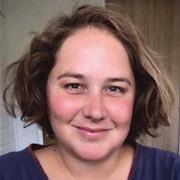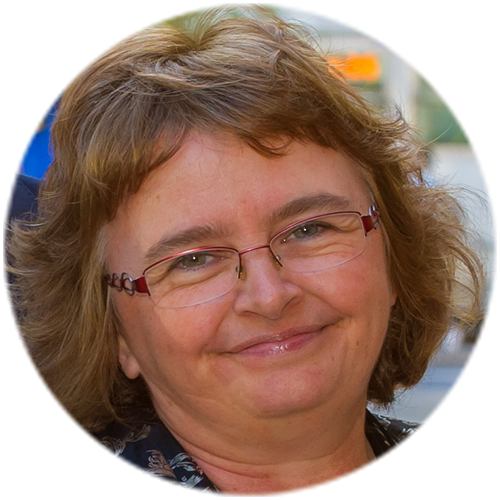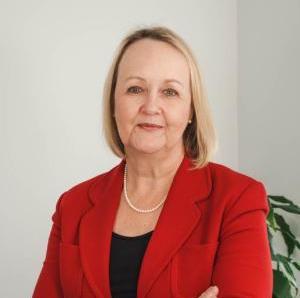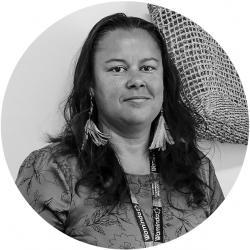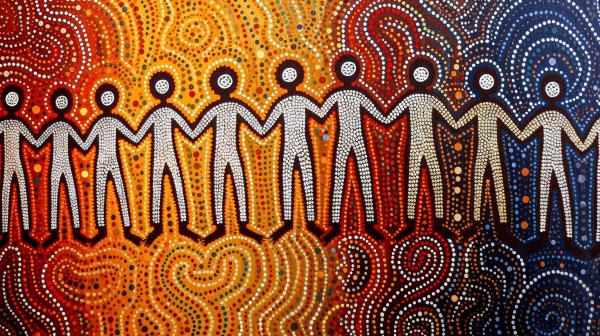
Exploring the clinical placement experiences of Aboriginal and Torres Strait Islander midwifery students at UTS
Health services designed specifically for and by First Nations peoples provide the most holistic, comprehensive and culturally appropriate health care to Aboriginal and Torres Strait Islander communities.
For First Nations midwifery students at UTS, having access to clinical placements in Aboriginal and Torres Strait Islander communities is vital to their educational experience, particularly for those who want to work in the community after graduation.
Over the last few years, in response to student feedback, UTS Midwifery has established clinical placement agreements with four Aboriginal-specific maternity services in NSW:
- The Birthing on Country service at Waminda South Coast Women’s Health and Wellbeing Aboriginal Corporation in Nowra.
- An Aboriginal-specific midwifery program within Liverpool Hospital in Sydney’s south.
- Malabar Midwifery Services in La Perouse.
- The Aboriginal Medical Service in Redfern.
Now, as students return from these placements, a collaborative research team is investigating their impact on the student experience. How have the placements supported First Nations students’ learning and career aspirations? What sort of barriers have they encountered? And how do their experiences support the decolonisation of midwifery care in Australia?
An affirmation of Indigenous identity
UTS Midwifery lecturer Dr Rebecca Coddington and her colleagues Danielle Manton, Associate Professor Director Deborah Fox and Professor Kathleen Baird are leading the research in partnership with Melanie Briggs from Waminda.
Dr Coddington says that while the project is ongoing, preliminary findings show that students value the opportunity to undertake a placement in an Aboriginal-specific service.
It’s really come though clearly that it’s an experience that really affirms their identity both as Aboriginal women and Aboriginal midwives, which are two different identities that are really important in the work that they’re doing.
We’ve also seen some important outcomes around being mentored by another Aboriginal midwife — someone who understands you and who shares and affirms your identity.
The research has also revealed that many Aboriginal and Torres Strait Islander midwives and midwifery students feel rejected by the conventions of traditional medical environments.
An example identified in the findings, Dr Coddington says, is the way that Aboriginal midwives communicate with their clients, which tends to be less formal than the way that non-Indigenous clinicians might speak.
During the interviews, the students and midwives reported having experienced judgement from non-Aboriginal colleagues for what was perceived to be ‘unprofessional’ language, despite engaging with clients in culturally safe and supportive ways.
The most beautiful line to describe that was a participant saying: ‘Just because I explain something in a simple way doesn’t mean I have a simple understanding’.
It’s around packaging this knowledge that they’ve gathered through their studies but sharing it with women in community in a very informal way.
Students also shared their experiences of trying to deliver woman-centred care in tertiary hospital settings, but feeling held back by mainstream systems that didn’t recognise what woman-centred care might look like in Aboriginal and Torres Strait Islander contexts.
“They talked about then going into community and seeing how Aboriginal women were welcomed into maternity services, they knew how many kids each client had, they knew who was hanging out with whom in community, and how it created a sense of women being really valued and given individualised care,” Dr Coddington says.
Towards culturally safe midwifery care
Understanding the broader picture of the student experience will help the UTS Midwifery team continue refining their clinical placement strategy to enhance its value to students and service partners. The researchers will also interview registered midwives supervising student placements within these midwifery services to understand their perspectives.
While most Aboriginal-specific placement providers focus on supporting First Nations students, these placements could one day be made available to non-Indigenous students who would benefit from learning the principles of culturally safe midwifery care.
During the interviews, students told us that in the mainstream hospital, whenever an Aboriginal woman walked through the door, they’d assign the Aboriginal student to look after her.
Sometimes students felt this was tokenistic — it’s everyone’s responsibility to provide culturally safe care.
Associate Investigator Danielle Manton is the Faculty of Health Indigenous Liaison officer at UTS. Although supportive of this change to clinical placements for midwifery students, she says that there is still a lot of work to be done to create a healthcare system free from racism.
Education is the most pragmatic place to start to influence system change. Additionally, there are legislative drivers across the sector needed to make this happen.
The end goal of the work is to establish a model for Aboriginal-specific clinical placements that could be rolled out across other disciplines within the UTS Faculty of Health and at other universities.
More broadly, the research could play a role in continuing to build the midwifery workforce, a vital outcome in a country with an estimated national shortfall of 1,300 registered Aboriginal and Torres Strait Islander midwives .
The problem
Australia’s midwifery workforce faces a shortage of 1,300 Aboriginal and Torres Strait Islander midwives. Increasing the number of Indigenous students who complete midwifery degrees is key to addressing this shortfall; however, while many students intend to work in community after graduation, there are few opportunities to develop their skills in Aboriginal-specific health environments.
The response
At UTS, a series of new organisational partnerships have increased the number of Aboriginal-specific clinical placement opportunities available to Aboriginal and Torres Strait Islander midwifery students. This project explores the impacts of these placements on students’ learning, cultural identities and future midwifery careers.
What helped accomplish this?
The project was a collaboration between UTS Midwifery and Waminda, an Aboriginal Community Controlled Health Organisation (ACCHO) in Nowra. Melanie Briggs, the senior manager of Waminda’s Birthing on Country service, provided vital insights into the cultural and professional considerations of the project design.
What has changed as a result?
The students and midwives interviewed for this research shared vital insights into the challenges and opportunities of Aboriginal-led maternity care in Australia. This project lays the foundations for an Aboriginal-specific clinical placement model that could be rolled out across the UTS Faculty of Health and other universities, and for the future growth of the national midwifery workforce.
Download full case study
Team members
-
Casual Academic, Faculty of Health
-
Director Of Indigenous Health Education, School of Public Health
-
Associate Professor, UTS School of Nursing and Midwifery
-
Head Of School, Nursing And Midwifery
-
2010 Health Award, Bachelor of Midwifery
